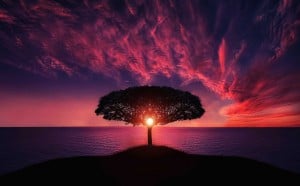Time, Soul, and Transformation: African Diasporas Black Butterfly
Black Butterfly, sailed across the waters
Tell your sons and daughters
What the struggle brings

Black Butterfly, set the skies on fire
Rise up even higher
So the ageless winds of time can catch your wings
While you slept, the promise was unkept
But your faith was as sure as the stars
Now you’re free, and the world has come to see
Just how proud and beautiful you are ~ Deniece Williams
It is absolutely amazing the endurance of the butterfly. The ability to embrace change despite the ever changing of his/her environment and even his/her own personal change. The ability to adapt to change to an extreme that at times those outside of ourselves don’t recognize who we are, what we were, and how we arrived at our destination. Some, to the point, have forgotten the transformation prior to our new found beauty: now and again, must be reminded the process of such transformation. On the hand, some must be reminded that the struggle was needed to overcome this new and beautiful transformation…. Who we are today.
Transformation is inevitable: this the butterfly knows. Yet, still is eager to go through it for the butterfly knows whatever struggle lies before him/her is needed to be reborn (life, death, rebirth, life, death, rebirth). To be magnificent and to have his/her voice heard. Would we ever really listen to the caterpillar of such warnings? Most of wouldn’t—and therefore nature knows that at time aesthetics is needed for others to take notice.
Traditionalist is aware of this: that on the outside our belief and practices seems too superficial and bizarre from some foreign eyes. While those who truly are pure in heart sees the deeper meaning. Our transformation is hidden in dances, poetry, proverbs, songs, artwork, and the land. Waiting for one to appreciate the beauty that is riddled in codes within. Waiting for one to understand our songs, dance, and willing to hear or read our stories… stories that are riddled in our “belief” system. Like the butterfly, our “belief” system is a way of life and survival vs. structural with or without purpose. Traditionalist not solely takes into consideration of their individual current life but also the life, death, rebirth of their ancestors simultaneously with this current life. African-based religion of the Diasporas is exactly that—the life of our ancestors on the African continent of the ole continued with the new life in the Diasporas. Embracing the ugly [metaphoric caterpillar], the in-between standstill of beauty and ugly [metaphoric cocoon: pupa] by the fight for liberation, and finally the complete beauty [the butterfly being liberated].
These stories are in our song, dance, and proverbs, mediums [gods, orishas, loas, and ancestors], rituals, symbols, poetry, art, music, elements, and earth. Asking the traditionalist to give up their belief is asking individuals if they would voluntarily undergo a total amnesia. Not recalling their name, where they came from, and the beginning of their life. It is the same frustration of cognitive memory disorders of Alzheimer and Dementia not just for the individual who is diagnosed with such degenerate disease but also for their loved ones.
Paganism, in all its sectors and branches, is traditionalism: a way to connect to our ancestors with varies methods. Despite the fact that one group of religion and/or people tried to suppress our tradition, it couldn’t be totally lost due to the few who resisted forgetfulness. Our ancestors simply adjusted to the new environment with various codes and lores [lores that became known as folklore, mythos, and/or “classical literature/song/dance”]. Even blending their old ways within the new. It was their way and currently our way to tell their, and our own, struggle with the promise of a better tomorrow. Waiting patiently within the metaphoric cocoon for the right time, place, and circumstance to tell.
African Traditionalist religion from the Diasporas is our history in oral and expressive form. It tells the tales of our ancestors and lineage from time immortal. It answers not only who we are but where can we go from “here” forward and how to survive all the while marching on. It is fascinating to note that not all Traditionalists share the same hidden codes due to tribal affiliation and lineage. The beauty of not sharing the same lores is equally like the beauties of not all snowflakes are alike. It fills the individualist need for uniqueness while celebrating commonalities.
When “questioned”, even to the point of persecution, why do I hold such “superstitious” practices by my African Diaspora peers… I can’t halt thinking of the Tree of Forgetfulness and Tree of Remembrance “magical” property and if such magical properties indeed worked. For some it is a lore but the trees did exist [some countries still have the tree in display] during the captivity of the “weaker” link. The Tree of Forgetfulness (note: some call this tree, Tree of Forget) was a tree that all captive African men and women were made to walk around [men 9 times, women 7 times: some say both genders 3 times. The amount varies] so they can forget their life on Africa; their families, their language, their religion, their tribe, their culture, and lineage. To forget that not only the merchants [“Western” countries who took part of the slave trade] were “in” on the most heinous act but also their African brothers and sisters, the dealers. Even then our ancestors believed in the power of the land, the elements, and the power of the unknown. Some were torn regarding the power of the tree that they even evoked a second tree— the Tree of Remembrance. A “secrete” tree that promise that those who walked around the tree, counterclockwise, will always Remember what took place, their culture, their language, their heritage, their tribe, their religion, and the memories. This secretive tree was considered to “counteract” the magical properties of Tree of Forgetfulness. The Tree of Remembrance secondary purpose is that even though physically the ancestors of the slave trade may not ever physically step foot onto their native land: their spirit, after life, will return on Africa soils. Not all captive ancestors walked the tree of Remembrance. This gives away to the understanding why some African-Traditionalist is accepting of those who don’t remember: in reverse, an explanation why those don’t remember, at all. There is no need for sadness for each ancestor had their reason to not walk around the Tree of Remembrance: the sole focus of the beauty of the butterfly in its current state, not the past.
The history of such trees is remembered in our hidden code of dance, music, art and stories. Similar of how in African Diaspora Christian culture, that doesn’t acknowledge African based religion, still holds stories of life on the Americas in their Christian psalms, song and dance. How enslaved African ancestors would sing Christian songs to reveal the Underground Railroad passage. How the Negro National Anthem is an anthem for a better tomorrow. The tradition of charismatic African Diaspora Christianity is the tradition of how our African ancestors worship; jumping up and down during joy and sorrow, clapping the hands, stomping their feet, raising their voices up high—it is an unconscious remembrance (a semi-amnesia recall). Charismatic Christianity is how the ancients worshipped regardless of race—the hidden code that tells the tale of the ancients… waiting to be discovered and appeased. My superstitious practice is similar to “theirs” The only difference is the KNOWING where it stems from: as I know where the journey of the butterfly began; the caterpillar. Being black and Pagan, to me, is the ability to see the various stages of beauty within a period of “ugliness” or, as you will, life stages. It is the ability to see surpass the mundane: to understand how some people see all stages of transformation while others focus on individual stages. It is the ability to confidently admit that “Yes, my ancestors were, and some still are, Pagans and beautiful. It wasn’t a weakness but rather strength. It took tremendous amount of strength, faith, and intelligence to blend and conceal their traditions so it wouldn’t be long forgotten. It took tremendous amount of flexibility to adaptation to maintain their identity, in order for me to have my own and my children’s and their children; so on and so forth” For me, the honor to tell the story of the butterfly in various stages is symbolically telling our ancestor’s stories within our very own voices: their hidden mysteries will not fade away nor go without notice. What works for me, works for a reason…what works for you, works for a reason…but ultimately, we are a beautiful black butterfly.
Morning light, silken dreams to flight
As the darkness gave way to dawn
You’ve survived, now your moment has arrived
Now your dreams has finally been born
Let the current lift your heart and send it soaring
Write the timeless message clear across the sky
So that all can read it and remember when we need it
That a dream conceived in truth can never die,
Butterfly ~ Deniece Williams
Above photo is the wood art “story” of the African slave trade in the country of Republic of Benin, formerly known as Dahomey. Artwork of the slave trade circles the wood to symbolize both the Tree of Forgetfulness and Remembrance. The artwork, as a whole, is of “Remembrance” The carved art figures around the tree are symbolically of Forgetfulness. The photo was taken back in 2008 during my father’s visit to the homeland of his forebears.
















